


This site is made possible by member support. 💞
Big thanks to Arcustech for hosting the site and offering amazing tech support.
When you buy through links on kottke.org, I may earn an affiliate commission. Thanks for supporting the site!
kottke.org. home of fine hypertext products since 1998.
Entries for May 2016
“Our hot list of 20 influential NYC babies” SERIOUSLY!?? NO NO NO
How Gromit from Wallace and Gromit is built

Aardman’s films and shows (particularly Shaun the Sheep) are some of my favorite things to watch with the kids. Animator Merlin Crossingham shares how the Gromit character is built, from his stainless steel skeleton on up.
In the first film, A Grand Day Out, Nick was going to make Gromit speak and had planned a whole mouth design. The first time he animated Gromit, however, he found that the way the character could communicate using body language and expressive eyebrows was much more powerful than by speaking. So he made a snap decision not to give Gromit a voice, which he’s stuck to. Our good animators are able to let you know instantly what the model is thinking or doing.
(via @bdeskin)
Are you your body? And which half of your brain is you?
Kurzgesagt and CGPGrey collaborated on a pair of videos about the self. The first video considers the human being as a collection of cells. How many of those cells can you take away before you stop being you? And does that question even make sense? The second video notes that if you sever the connection between the two halves of the human brain, they will each seemingly continue to operate as separate entities. But which of those entities is you? Are there two yous?
When designers die. “Vignelli had two custom crematory urns. One was inscribed in Optima, the other in Helvetica.”
How do stealth aircraft avoid radar detection?
The B-2 stealth bomber has a length of 69 feet and a wingspan of 172 feet but possesses the radar profile of a large bird. How does the plane evade radar so effectively?
“Frog and Toad and the Self”

Bert Clere wrote a nice appreciation for the children’s books of Arnold Lobel, among them the Frog and Toad series and Owl at Home. Clere says Lobel’s stories offered insights for children about, yes, friendship but also about the importance of individuality.
Lobel’s Frog and Toad series, published in four volumes containing five stories each during the 1970s, remains his most popular and enduring work. Frog and Toad, two very different characters, make something of an odd couple. Their friendship demonstrates the many ups and downs of human attachment, touching on deep truths about life, philosophy, and human nature in the process. But it isn’t all about relationships with others: In the series, and in his lesser-known 1975 book Owl at Home, Lobel offers a conception of the self that still resonates decades later. Throughout his books, he reminds readers that they are individuals, and that they shouldn’t be afraid of being themselves.
Frog and Toad are favorites at our house. I’m going to read them to the kids this weekend with a new appreciation. Wanting to fit into the group is a powerful impulse for children, reinforced these days by the increased focus on group work in schools, so it’s nice to have a counterpoint to share with them.
Update: From the New Yorker’s Colin Stokes, another appreciation of Arnold Lobel. Lobel’s daughter Adrianne suspects the Frog & Toad books were “the beginning of him coming out” of the closet.
Adrianne suspects that there’s another dimension to the series’s sustained popularity. Frog and Toad are “of the same sex, and they love each other,” she told me. “It was quite ahead of its time in that respect.” In 1974, four years after the first book in the series was published, Lobel came out to his family as gay. “I think ‘Frog and Toad’ really was the beginning of him coming out,” Adrianne told me.
The article also sadly notes that Lobel died at age 54, “an early victim of the AIDS crisis”. (via @bdeskin)
Tips and tricks for street photography
Thomas Leuthard takes us around Salzburg and demonstrates a number of tricks you can employ to take photos on the street. Tricks sounds too gimmicky…think of these as potential approaches to being creative with a camera. Watching this made me want to start taking photos again. Before I had kids, I carried a camera pretty much everywhere.1 I still do (in the form of an iPhone 6s) but I’m not hunting for photos in the same way.
And, somewhere on my hard drive, I have dozens of photos I took in Salzburg with that camera during a 2006 trip.↩
Exploring flyover country on your phone

The app Flyover Country, built by a team at the University of Minnesota, uses GPS to tell you what interesting features you’re currently flying over.
Learn about the world along the path of your flight, hike, or road trip with GPS tracking. Offline geologic maps and interactive points of interest reveal the locations of fossils, core samples, and georeferenced Wikipedia articles visible from your airplane window seat, road trip, or hiking trail vista.
More on the app from Fast Company. (via @feltron whose book came out the other day!)
How the Seinfeld Theme Song Was Made
This 90s TV interview with Seinfeld theme song composer Jonathan Wolff is more interesting than you’d think. He talks through how he matched the theme to Jerry’s standup delivery tempo and how each episode’s song had to be customized the match the pacing of Jerry’s particular monologue that week. (via digg, which is particularly good today)
Update: The Sideshow podcast featured Wolff on an episode last year.
The show’s producers were having difficulty finding music that wouldn’t overpower the comedian’s opening routines. “Jerry, you’ve already given me the melody and theme,” Wolff told Seinfeld. “My job is going to be to support you and the organic nature of your voice.” Wolff sampled his own mouth noises and slapped some funky bass over it and the rest is history. He built the theme to be manipulated - the rhythm of the mouth pops, shakers, and bass notes changed ever so slightly to fit the different monologues that opened every show.
(via @TheFarceur)
Update: Here’s a recent video about Wolff and how the Seinfeld theme came to be.
Of course the network hated the song. Of course.
Pub fare gets the fancy food TV treatment
From CBC Radio show This Is That, which previously did a bit on Artisanal Firewood, comes a spoof on fancy shows about chefs like Chef’s Table called Cooks.
What do I want people to think of my food? Well, that it’s fast, it’s cheap, it’s a little salty, and most importantly, that it was cooked all the way through.
Nailed it.
Slow guitar sped up sounds like a violin
The Samurai Guitarist recorded himself playing the Beatles’ Here Comes the Sun reeeeally slowly for 30 minutes and then sped the audio up by 20 times, which made his guitar sound like a violin. He explains how on Reddit.
Ok so my original plan was to rerecord the guitar normally when the video was done. I have a musical notation software that I plugged in everything exactly how I wanted to play it. I then added a metronome to trigger every 1/32nd note and set the tempo to 7 bpm, knowing that when sped up 20x that would be a nice tempo. It would also take 30 minutes or so which should be about the perfect time for a sunrise.
(via digg)
The dance number in Ex Machina works well with pretty much any song
In Ex Machina, Oscar Isaac’s Nathan Bateman performs a dance number with one of his AI robots, played by Sonoya Mizuno. It’s the scene where I decided I was going to like the movie. Mizuno is a ballerina as well as an actress, but Isaac has no problem keeping up with her as the pair dance to Get Down Saturday Night.
Now, Twitter account @oscardances is showing how you can plug pretty much any song into that scene and the dance still works. Here’s Michael Jackson’s Thriller:
thriller - michael jackson pic.twitter.com/JabWfGd49N
— oscar dances (@oscardances) April 29, 2016
Intergalactic by the Beastie Boys:
intergalactic - beastie boys pic.twitter.com/OxrVZNbPX4
— oscar dances (@oscardances) May 25, 2016
And Oops I Did It Again by Britney Spears:
oops i did it again - britney spears pic.twitter.com/ewnqRhSVHz
— oscar dances (@oscardances) May 26, 2016
And there are dozens more here. (via @gavinpurcell)
Killers of the Flower Moon by David Grann
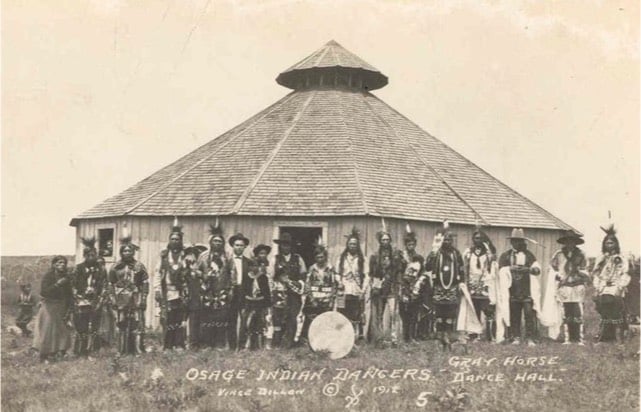
David Grann has been relatively quiet lately on Twitter and at the New Yorker, where he is a staff writer; he hasn’t written anything for them in more than four years. I figured he was busy writing a book and so he was. Killers of the Flower Moon: The Osage Murders and the Birth of the FBI is about the murders of the members of the Osage Indian Nation in the 1920s.
In the 1920s, the richest people per capita in the world were members of the Osage Indian Nation in Oklahoma. After oil was discovered beneath their land, the Osage rode in chauffeured automobiles, built mansions, and sent their children to study in Europe.
Then, one by one, they began to be killed off. One Osage woman, Mollie Burkhart, watched as her family was murdered. Her older sister was shot. Her mother was then slowly poisoned. And it was just the beginning, as more Osage began to die under mysterious circumstances.
Sounds fantastic. Grann’s previous books are The Devil and Sherlock Holmes and The Lost City of Z, which should be out in movie form sometime soon.
Hollywood movies: too much fan service
In his latest video, Evan Puschak argues that intertextuality in movies — you know, fan service: “hey look, that thing you know from the previous thing!” — is increasingly doing the heavy lifting of creating drama and excitement, resulting in weaker stories.
I loved seeing the Millennium Falcon for the first time in The Force Awakens, the use of the original Jurassic Park vehicles in Jurassic World, and hearing Dumbledore’s name in the trailer for Fantastic Beasts and Where to Find Them, but yeah, those things have to be the cherry on top of good storytelling elements, not the whole sundae.
Neanderthal-built structures found in French cave are astonishingly old

In the 90s, Bruniquel Cave was discovered to have a chamber containing an interesting human-built structure made from broken stalagmites. Carbon dating of a burnt bear bone within the chamber put the age of the activity at 47,600 years ago, smack dab in the Neanderthal era in that area. But recently, after a lull in research about these cave structures, analysis of uranium levels in the broken stalagmites resulted in a much older date for the construction: 176,500 years ago.
Nor is it clear how the Neanderthals made the structures. Verheyden says it couldn’t have been one lone artisan, toiling away in the dark. Most likely, there was a team, and a technically skilled one at that. They broke rocks deliberately, and arranged them precisely. They used fire, too. More than 120 fragments have red and black streaks that aren’t found elsewhere in the chamber or the cave beyond. They were the result of deliberately applied heat, at intensities strong enough to occasionally crack the rock. “The Neanderthal group responsible for these constructions had a level of social organization that was more complex than previously thought,” the team writes.
American white male anxiety
In Trump Taps Into the Anxiety of American White Males, Anand Giridharadas writes:
Yet there is some evidence that a sizable number of white men see the push toward diversity, along with the larger changes it telegraphs, as less about joining and more about replacement, and a country that is less hospitable to them.
That sentiment is perhaps expressed in a quote widely circulated online in these discussions, though the origin is unknown: “When you’re accustomed to privilege, equality feels like oppression.”
This is perhaps what Tyler Cowen was getting at with his highly speculative and provocative What the hell is going on?
The contemporary world is not very well built for a large chunk of males. The nature of current service jobs, coddled class time and homework-intensive schooling, a feminized culture allergic to most forms of violence, post-feminist gender relations, and egalitarian semi-cosmopolitanism just don’t sit well with many…what shall I call them? Brutes?
Quite simply, there are many people who don’t like it when the world becomes nicer. They do less well with nice. And they respond by in turn behaving less nicely, if only in their voting behavior and perhaps their internet harassment as well.
I wouldn’t recommend it, but a spin through the comments on Cowen’s piece provides some examples of what he’s talking about.
Tesla Model X beats sports car while towing another car
If you skip to around 3:15 in this video, you’ll see a race between the Tesla Model X, the company’s electric SUV, and an Alfa Romeo 4C Spider sports car. The Model X easily beats the Alfa Romeo to 60 mph while towing another Alfa Romeo 4C Spider behind it. Here’s Keanu with a comment: “Whoa.” How can you not love a car outfitted with something called Ludicrous Mode? (via a proud @elonmusk)
Satellite imagery search engine
Terrapattern is a search engine for satellite images. You click on a specific feature of interest on a map and the site returns results that match it. For instance, here are the locations of solar panels in NYC.

You can also use Terrapattern to find school bus depots, fracking wells, Air Force bombers, baseball diamonds, train tracks, and much more.
There are only four cities currently represented (Pittsburgh, New York, San Francisco, and Detroit) but this is already super cool to play around with. (via @genmon)
This Sliding Door Sounds Like a Screaming R2-D2
My therapist and I have yet to figure out why, but I have a soft spot for objects that do unexpected impressions of other things and people. Like this sliding door that sounds like R2-D2 screaming. Or the falling shovel that plays Smells Like Teen Spirit. Or the door that can do a wicked Miles Davis impression. Or the nightstand door that sounds like Chewbacca. I even found one of my own a few months ago: the elevator door at the old Buzzfeed office sounded like Chewbacca as well. (via @williamlubelski)
Update: Here’s a video full of things that sound like Chewbacca.
Live reading of the terms of service for apps

In the latest Slow TV experiment, the Norwegian Consumer Council is doing a live read of the terms of service for a number of different apps, including Instagram, YouTube, Kindle, Spotify, and Snapchat. It’s in Norwegian and it looks like they’re on the last app, but the total time elapsed so far is 1 day, 7 hours, 49 minutes. (via @Rudien)
Update: The live reading is over, and there was wide variation in reading times. The iTunes TOS took almost 200 minutes to read while those for an app called Vipps took only 3 minutes. The terms for Candy Crush, which is just a game, took more than an hour and a half to read aloud. Absurd.
Demonstration of a working Gutenberg printing press
The Crandall Historical Printing Museum has the “most complete and functioning Gutenberg Press in the world” and in this video you can see one of the museum’s guides demonstrating it for some visitors. (via digg)
The 100 greatest American films
In 2015, BBC Culture polled critics around the world and came up with a list of the best 100 American films. The video above offers a visual look at the list. Hitchcock, Kubrick, and Spielberg each have several films on the list. Although many of the films were edited by women, only one was directed by a woman.
13 books recommended by Ta-Nehisi Coates
In a conversation last year with Nikole Hannah-Jones, Ta-Nehisi Coates recommended that readers of his acclaimed Between the World and Me check out a baker’s dozen other books, including his mentor David Carr’s The Night of the Gun, The Half Has Never Been Told (previously mentioned here), and James Baldwin’s The Fire Next Time.
I could have imagined Isabel Wilkerson’s excellent The Warmth of Other Suns on this list too; it’s the most eye-opening American history book I’ve read in years. (Paging Lin-Manuel Miranda to make a play out of this.)
A rare live performance of Creep by Radiohead
Creep is perhaps Radiohead’s best known song, especially in the US. But the band is a bit ashamed of it, so they don’t play it all that often. They played it last night at a show in Paris for the first time since 2009. When I saw them in 2001, they played it for the first time since 1998 (and it was awesome).
There’s a certain point in everyone’s life when they’re unable to appreciate their younger selves. Between this and putting True Love Waits on their latest album, perhaps Radiohead has become more accepting of the band they used to be. The genie’s out of the bottle, mates, you might as well use the wishes.
How highways wrecked American cities
As part of the Interstate Highway System project, expressways were run right through the heart of many American cities, disrupting neighborhoods and displacing hundreds of thousands of people.
The 48,000 miles of interstate highway that would be paved across the country during the 1950s, ’60s, and ’70s were a godsend for many rural communities. But those highways also gutted many cities, with whole neighborhoods torn down or isolated by huge interchanges and wide ribbons of asphalt. Wealthier residents fled to the suburbs, using the highways to commute back in by car. That drained the cities’ tax bases and hastened their decline.
So why did cities help build the expressways that would so profoundly decimate them? The answer involves a mix of self-interested industry groups, design choices made by people far away, a lack of municipal foresight, and outright institutional racism.
Here’s some homework: think about Uber/Lyft and the coming self-driving cars (Tesla, Apple, Google, Ford, etc.) in the context of the highways’ effect on the American city. Who benefits most from these services? (The wealthy? Huge companies?) How will they affect the funding and use of public transportation? What will happen to cities? To urban sprawl? To the economically disadvantaged?
Guns replaced with selfie sticks
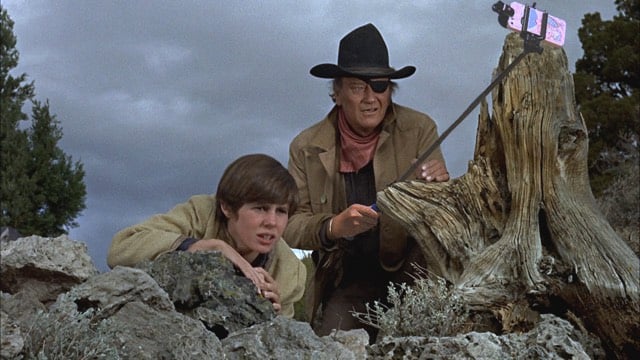

The John Wayne one made me LOL. Many more here. See also Matt Haughey’s conservatives holding dildos.
Update: Some prior art, also from Matt, who loves to Photoshop guns into other things.
Bill Gates’ summer reading list
Microsoft founder Bill Gates, in addition to attempting to save the world, is also a voracious reader. He recently recommended five books that you should read this summer. On the list is Seveneves by Neal Stephenson, which I might finally try, having absolutely loved Snow Crash and Cryptonomicon when I read them a few years ago. Gates also recommends Yuval Noah Harari’s Sapiens, which I read earlier this year and think about every few days. I wrote a bit about Sapiens and the invention of farming, which is a topic about which Gates disagreed with Harari.
Things both the world’s most and least privileged people say. “My children aren’t vaccinated!”
A robotic rocks sorter
Jller is a machine that sorts stones from a specific river according to their geologic age.
The machine works with a computer vision system that processes the images of the stones and maps each of its location on the platform throughout the ordering process. The information extracted from each stone are dominant color, color composition, and histograms of structural features such as lines, layers, patterns, grain, and surface texture. This data is used to assign the stones into predefined categories.
See also the robotic pancake sorter. (via colossal)
The Simpsons couch gag in the style of an Ikea instruction manual
The couch gag on last night Simpsons episode was illustrated in the style of an Ikea instruction manual. See also the Ikea instructions for making Dick in the Box.
Drive 2: The Uber Years
In Drive 2, Ryan Gosling trades his robbery getaway driving gig for driving for Uber.
Hyper-Reality
Keiichi Matsuda’s Hyper-Reality “presents a provocative and kaleidoscopic new vision of the future, where physical and virtual realities have merged, and the city is saturated in media”. This is like a 5-minute episode of Black Mirror. Do not want. See also these previous videos about augmented reality overload, including an earlier video by Matsuda.
Captain America: Hamilton’s Federalists vs. the Jeffersonian Republicans
I was just thinking about Hamilton1 and Captain America: Civil War, two of pop culture’s current obsessions, and thought, hmm, what if you made a superhero movie about the early years of American democracy? And then I quickly realized that Civil War in some ways echoes the political battle between Hamilton’s Federalists and Jeffersonian Republicans.
In the film (or at least the first part of it), Tony Stark is a Federalist; he realizes the need for regulation and oversight of the Avengers by the government. Captain America is a Republican; he believes in the rights of the smaller group (states’ rights!) and that regulation comes at the cost of essential freedoms. Karen Walsh wrote much more about the parallels between the two.
Captain America: Civil War begins with a focus on the Sokovia Accords. As the Avengers split into two groups, Iron Man and his cronies focus on granting the Accords validity in order to remain a unified front and gain popular trust. Cap and his cohorts determine that sacrificing their freedom to the government allows for errors that overshadow the purpose of their ability to protect the people who most need them.
In essence, Iron Man and his team represent the Federalist belief that a strong central government is essential to aggregating the trust and the will of the people.
Update: Two more takes on the parallels between Hamilton and Captain America: Captain America, Aaron Burr, And The Politics Of Killing Your Friends and Best of Frenemies. (via @Chan_ing)
The play, not the man so much. The play that I’m not going to get a chance to see before [EVENT HAPPENS] without splashing out an impossible amount of cash. Has anyone written a script for entering the Hamilton ticket lottery yet?↩
In a game of big words, brevity triumphs
If you love reading about unusual Moneyball-esque strategies in sports, check out how a player on the Nigerian team won the Scrabble World Championship last year.
So while Scrabblers still fancy bingos, they increasingly hold off on other high-scoring moves, such as six-letter words, or seven-letter terms that only use six tiles from the rack. Instead, by spelling four- or five-letter words, a player can keep their most useful tiles — like E-D or I-N-G — for the next round, a strategy called rack management. The Nigerians rehearse it during dayslong scrimmage sessions.
Also, thanks to a design quirk, the board is oddly generous to short words. Most of the bonus squares are just four or five letters apart.
“The geometry of the Scrabble board rewards five-letter words,” said Mr. Mackay, who lost to Mr. Jighere in the world championship final, during which the Nigerian nabbed a triple word score with the antiquated adjective KATTI, meaning “spiteful.” “It’s a smart tactic.”
Woman is enraptured with talking Chewbacca mask
This woman in the talking Chewbacca mask is really feeling her Friday. FRIDAY!!! She’s not making the noise, the mask is! Get your own mask here and have your own fun. (It’s been a long week. This was delightful.)
P vs. NP and the Computational Complexity Zoo
When Grade-A nerds get together and talk about programming and math, a popular topic is P vs NP complexity. There’s a lot to P vs NP, but boiled down to its essence, according to the video:
Does being able to quickly recognize correct answers [to problems] mean there’s also a quick way to find [correct answers]?
Most people suspect that the answer to that question is “no”, but it remains famously unproven.
In fact, one of the outstanding problems in computer science is determining whether questions exist whose answer can be quickly checked, but which require an impossibly long time to solve by any direct procedure. Problems like the one listed above certainly seem to be of this kind, but so far no one has managed to prove that any of them really are so hard as they appear, i.e., that there really is no feasible way to generate an answer with the help of a computer.
The rarified air of the NBA 7-footer
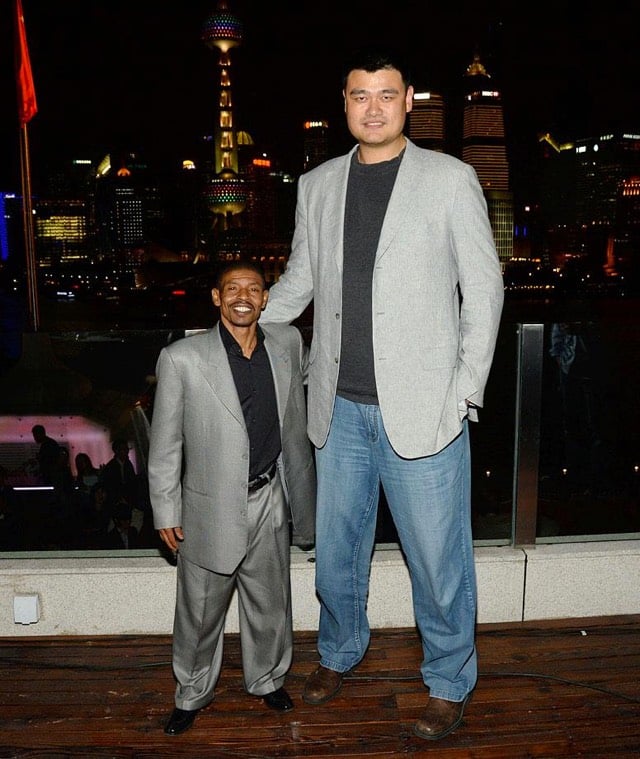
According to this 2011 article on Mark Eaton and other 7-footers who have played in the NBA, there are only 70 American men between 20 and 40 who are 7 feet tall…and that more than 1 in 6 of them get to play in the NBA.
The curve shaped by the CDC’s available statistics, however, does allow one to estimate the number of American men between the ages of 20 and 40 who are 7 feet or taller: fewer than 70 in all. Which indicates, by further extrapolation, that while the probability of, say, an American between 6’6” and 6’8” being an NBA player today stands at a mere 0.07%, it’s a staggering 17% for someone 7 feet or taller.
Being seven feet tall is absurdly tall and comes with a whole host of challenges, from bumping one’s head on door frames to difficulty finding clothes to health issues. Some of these difficulties arise out of simple geometry: as height and width increase, volume increases more quickly.1
See also one of my favorite links ever, The Biology of B-Movie Monsters.↩
Buddhabrot = Buddha + Mandelbrot fractals
If you remember back more than 12 years ago1 to when Jared Tarbell created these beautiful Buddhabrot images using Processing, then you’ll enjoy this ultra high-resolution exploration of the Buddhabrot fractal.
This looked crazy cool on my 5K iMac. The render took 10 days! (via digg)
You know, if I keep doing this for 18 more years, then maybe I’ll finally have something.↩
4DX tech turns movies into theme park rides
Not content with mere 3D, some movie theaters are outfitting themselves with what’s being called 4DX technology, which makes going to the movies more like a theme park ride. The chairs can move, vibrate, and tickle, and the system can also generate wind, lightning, snow, and even smells1 from the movie.
With only the best technologies, 4DX motion chairs are equipped with three base movements of heave (move up and down), roll (move left and right) and pitch (tilt backward and forward) which can create an endless expanse of possible combinations to mimic such actions as flying and driving. The skilled team of 4DX editors, “i-Studio”, are experts in maximizing the feeling of immersion within every movie without overstepping comfort bounds.
Yes, it actually snows in the theater:
There are only three theaters in the US with this system installed, including the Regal in Union Square, where you can currently catch Batman vs. Superman in 4DX. It’ll cost you though. A regular screening of BvS at Union Square is $15.60 per ticket, 3D is $20.10, and 4DX is $28.10.
Just think of what Adam Sandler can do with this feature!↩
The Evolution of How Rappers Construct Their Rhymes
In this video, Vox’s Estelle Caswell and Martin Conner break down how rappers construct their rhymes and how it’s changed and evolved since rap’s early days. As someone who doesn’t know a whole lot about music and even less about rapping but appreciates both, this was super entertaining and informative.
Everything is a Remix: The Force Awakens
When it came out in December, Star Wars: The Force Awakens made a shed-load of cash, garnered positive reviews from critics and fans alike, but also got dinged for borrowing too much from the previous films, particularly the original. In this edition of Everything is a Remix, Kirby Ferguson considers JJ Abrams’ remix settings on The Force Awakens and wonders if the essential elements of such an undertaking (copying, transforming, combining) were properly balanced.
Werner Herzog is teaching an online filmmaking class
Werner Herzog has made more than 70 films during his career of 50+ years. This summer, Herzog will be teaching an online filmmaking class at Masterclass. The fee for the course is $90 and includes 5 hours of video lessons about documentary and feature filmmaking, a class workbook, and the chance to get your student work critiqued by the man himself. The trailer above offers a little taste of what you’ll be getting.
For example, I do not use a storyboard. I think it’s an instrument of the cowards.
See also 24 pieces of life advice from Werner Herzog, including “carry bolt cutters everywhere” and “take revenge if need be”.
“Perfect” Donkey Kong score achieved
Wes Copeland recently shattered the all-time record high score for Donkey Kong with 1,218,000 points. During the 3 hour and 20 minute game, he didn’t die a single time.
It’s how he took the title, though that’s so staggering. Copeland did not lose a single Mario in the game. He took his first life all the way from the first level all the way to the end, cashing in the extra lives to obliterate all comers.
“This will be my last record score,” Copeland wrote on Facebook. “I don’t believe I can put up a game any higher than this.” Copeland had set 1.2 million as his ultimate goal in Donkey Kong, and said he’d retire from competition if he could reach that.
Copeland’s effort was a nearly perfect score; though the theoretical maximum is 1,265,000 points, the randomness of each game limits the number of points available before reaching the kill screen. If you’re looking for pointers, you can watch the entire game here:
The unbearable lightness of being yourself on social media
From the NY Times, the excellent Jenna Wortham on How I Learned to Love Snapchat. This bit caught my eye:
Its entire aesthetic flies in the face of how most people behave on Facebook, Instagram and Twitter — as if we’re waiting to be plucked from obscurity by a talent agent or model scout. But Snapchat isn’t the place where you go to be pretty. It’s the place where you go to be yourself, and that is made easy thanks to the app’s inbuilt ephemerality.
I wonder if Snapchat’s intimacy is entirely due to the ephemerality and lack of a “fave-based economy”. Blogs, Flickr, Twitter, Vine, and Instagram all started off as places to be yourself, but as they became more mainstream and their communities developed behavioral norms, the output became more crafted and refined. Users flooded in and optimized for what worked best on each platform. Blogs became more newsy and less personal, Flickr shifted toward professional-style photography, Vine got funnier, and Twitter’s users turned toward carefully crafted cultural commentary and link sharing. Editing worked its way in between the making and sharing steps. In 2013, Mat Honan wrote of Vine:
It built a ground up culture that feels loose, informal, and — frankly — really fucking weird. Moreover, most of what you see there feels very of-the-moment. Sure, there’s plenty of artistry that goes into making six second loops, and there are volumes of videos with high production values. But far more common are Vines that serve as windows into what people are doing right now.
Sounds familiar, right? I’m almost positive that when Instagram was first blowing up, similar things were written about it in comparison to Flickr. Now, as Wortham notes, Instagram is largely a place to put your heavily curated best foot forward. But scroll back through time on anyone’s Instagram and the photos get more personal and in-the-moment. Even Alice Gao’s immaculately crafted feed gets causal if you go back far enough.
Although more than a year older than Vine and fewer than two years younger than Instagram, Snapchat is a relatively young service that the mainstream is still discovering. It’ll be interesting to see if it can keep its be-yourself vibe or if users tending toward carefully constructing their output is just something that happens as a platform matures.
Huge archive of hip-hop mixtapes

The Internet Archive is now hosting thousands of hours of hip-hop mixtapes. Jason Scott explains:
The code I had to write to pull in these tapes (which are often distributed via torrents, because the albums generally range between 80-200mb), then to clean up the resulting downloads, and make sure the right cover is the “official” cover in the collection, took me a while. It’s “human/machine augmented” stuff, because there’s massive variation in how the files come in. Let’s not pretend it’s real work — the real work is even keeping track of all this stuff.
I have a list of 17,000 tapes to access at the exact moment, and so something close to that number might end up at the Archive across the next couple months. Keeping track of new releases will have to be automated, I suppose. I’ll probably need help.
Brief raptures in deserted places
On Ask MetaFilter, sleepy psychonaut declares their love for spending time in temporarily deserted places that are normally crowded.
Examples include San Francisco during Burning Man weekend, Penn Station at 2pm on Christmas day, almost everywhere in the US on Easter Sunday, the Financial District in Boston on Saturdays and Sundays, many major European cities during August.
Several people offered up suggestions; these were my favorites:
Any big amusement park on a day when it’s raining. The heavier the rain, the fewer people. (Cue family flashback to an idyllic day at Disneyland when there was hardly anyone there.)
Unless there’s a special event, people don’t go to museums in the evening. Here’s what the British museum looks like if you go on such an evening.
Any Colorado ski resort town during the summer when there’s not a festival going on. The ski paths are alpine meadows full of flowers you can hike on, and the streets are pretty much empty. Also renting condos there is super cheap off-season.
For an area that gets not quite as deserted but is much nicer to visit after the end of the usual season, you have to promise not to tell anyone (because this is a secret) but the beach towns along Lake Michigan are just about empty by a week after Labor Day but the beaches are actually at the nicest they will be all season because the lake has been warming all summer. Mid-September is a really nice time of year to visit the Great Lakes if you like clean, deserted beaches, farm markets full of fresh produce, restaurants with plenty of open tables, and relaxed hospitality staff who are happy to have survived the summer.
I went to the Muse D’orsay deep off season in the days before Christmas. Being alone in a room full of Van Goghs for at least 10 minutes (well but for a security guards & cameras) is still one of the highlights of my life.
(via @mathowie)
The Sweetheart Roller Skating Rink



Photographer Bill Yates spent months documenting the happenings at the Sweetheart Roller Skating Rink in Florida in the early 1970s. After a successful Kickstarter campaign, Yates is publishing a book of the photos.
20 best films directed by women
Fifty films critics weighed in on their favorite movies directed by women and Fandor tallied the results into a top 20 list.
Wind walking atop Mount Washington
The top of Mount Washington, in New Hampshire, is one of the windiest places on Earth. In 1934, a windspeed of 231 mph was recorded — a record that stood until a typhoon-powered wind topped 254 mph in Australia — and the wind chill value on a January day in 2004 was -102.59 °F. So, it’s a cold, windy place.
Yesterday, the winds on Mount Washington only got up to 109 mph, but it still created the perfect conditions for people to fly themselves like kites and bad conditions for walking. Here’s what living and working up there is like.
Wind on the summit is an experience that you can’t just describe to understand. It makes you fully appreciate that air is in fact a fluid and not empty space. It is really impossible to safely face down hundred-mile-per-hour winds almost anywhere else; you’d either be risking your life trying to hike into them (I was exhausted after several minutes of playing in the wind) or risking your life in a hurricane, where flying debris and shrapnel poses a huge threat.
(via @EricHolthaus)
Update: It is also impossible to eat in high winds.
(via @kyleslattery)
The trippy past and scientific future of psychedelics
After The Man freaked out back in the 60s, LSD and other psychedelics were banned and criminalized. But slowly, scientists are experimenting with psychedelics to treat depression, anxiety, and other ailments.
In the 1960s, a psychologist and former Harvard teacher named Timothy Leary coined the phrase ‘Turn on. Tune in. Drop out.’ The slogan was inspired by advertising jingles, but Leary wasn’t pushing a product, he was promoting a drug: LSD.
But today, scientists are studying psychedelics once again, in the latest twist in the long, strange story of LSD.
Even outside of a therapeutic setting, many people extolled the beneficial effects of psychedelics. Former Apple CEO Steve Jobs recalled in his biography by Walter Isaacson:
Taking LSD was a profound experience, one of the most important things in my life. LSD shows you that there’s another side to the coin, and you can’t remember it when it wears off, but you know it. It reinforced my sense of what was important — creating great things instead of making money, putting things back into the stream of history and of human consciousness as much as I could.
Check out the NY Times companion piece and the archival footage of LSD experiments on cats, spiders, and goats.
An extraordinary panorama of Mars. Fullscreen this on a big monitor; it really gives you the feeling of being there.
Mechanically stabilized sand
If you’re clever, you can take normal sand or dirt and support really heavy things with it. Near the end of this video, a small block of reinforced sand holds up a car wheel with absolutely no difficulty.
And yes, the Practical Engineering YouTube channel is a new favorite. (via digg)
The Demon in the Freezer
Errol Morris has made a short film about the world’s remaining stocks of smallpox virus 1 and the debate between those who want to eliminate the virus forever and those who want to keep it around.
In the story from classical Greece, Pandora was warned: Don’t open the box. She opens it anyway. The various pestilences are unleashed on the world but Hope remains at the very bottom of the box. Today there are microbiologists who want to continue to research smallpox. If they are given a free hand, what might they unleash?
There are those who insist that these residual stocks of smallpox should not be destroyed because some ruthless super-criminal or rogue government might be working on a new smallpox, even more virulent than existing strains of the virus. We may need existing stocks to produce new vaccines to counteract the new viruses. New viruses, new vaccines. New vaccines, new viruses. An escalating arms race with germs.
Keep this video in mind when you read about the latest advances with CRISPR.
I’m going to embed the video here, even though it seems like every time I embed a video from anywhere but YouTube or Vimeo, it either autoplays or, even worse, autoplays with the sound on. Also, while I was watching on the Times’ site, the video was glitchy and stopped twice, prompting two reloads. I get why the Times (and other media outlets) want to develop their own embeddable media, but until they get it right, they should leave it to Vimeo and YouTube, the only two sites who have actually gotten it right.↩
Celebrity fan art comes to life


In the same vein as these renderings of bicycles drawn from memory, here are celebrities photoshopped to look like fan art drawings. A simple example of dancing the flip flop.
Surprise! A new Lena Dunham book is out today. All proceeds go to charity. Your move, Beyonce.
Car alarms don’t work. Then why are they so common?
Dorothea Lange’s Photos of Japanese Americans’ Imprisonment During WWII


In 1942, the US government hired Dorothea Lange (of Migrant Mother fame) to take photos of the removal and imprisonment of Japanese Americans during World War II. Although Lange quit after a few months because government censors wouldn’t let her shoot images of barbed wire and the bayonets on guards’ guns, she took hundreds of photos documenting this shameful moment in American history.
Famous for her forlorn images of Dust Bowl America, this pioneering female photographer was hired by the War Relocation Authority in 1942 to document the removal and imprisonment of Japanese Americans. Although her skill at candid portraiture was unparalleled, “Lange was an odd choice, given her leftist politics and strong sympathy for victims of racial discrimination,” writes scholar Megan Asaka. The position was a challenging one for Lange as well. “Appalled by the forced exile, she confided to a Quaker protestor that she was guilt stricken to be working for a federal government that could treat its citizens so unjustly.”
The WRA initially gave Lange little instruction about where and what to shoot, but controlled and censored her while she was at work. When documenting life inside the assembly centers and concentration camps, she was prohibited from taking shots of barbed wire and bayonets. Unable to tolerate this censorship and her own conflicted feelings about the work, Lange quit after just a few months of employment with the WRA.
Less ashamed at what they’d done and more worried about PR backlash, the government embargoed Lange’s photos until 1972.
If this all makes you think of some recent comments about Muslims from a certain Republican presidential candidate, history may not repeat itself, but it sure does rhyme.
Update: Ansel Adams also took dozens of photos of the Japanese American interment camp at Manzanar.

So did photographer Toyo Miyatake, who was among the prisoners at Manzanar.

The exclusion order forced Miyatake, his wife and four children, to the concentration camp at Manzanar. He was able to store his photographic equipment but managed to smuggle a camera lens and film plate holder into the camp against government orders. Miyatake told his son Archie that he felt it was his duty to document camp life. An Issei carpenter in camp constructed a box to house the lens, and Miyatake was able to get film into camp by way of a hardware salesman and former client. The photographer eventually asked camp director Ralph Merritt if he could set up a photo studio, and Merritt, who learned about Miyatake from Edward Weston, consented with the provision that Miyatake only load and set the camera, and a Caucasian assistant snap the shutter. Eventually, that restriction was lifted, and Miyatake was designated official camp photographer, and granted the freedom to take photos of everyday life at Manzanar.
Miyatake and Adams met at the camp and began a collaboration. Lange and Adams were friends — he printed Migrant Mother for her — and she was instrumental in convincing Adams to document Manzanar. But she was also critical of his detached approach:
In 1961, Lange said about Adams’s taking landscape pictures at the Manzanar Relocation Center: “It was shameful. That’s Ansel. He doesn’t have much sense about these things.”
Update: Anchor Editions made a page with dozens of Lange’s photos paired with quotes from contemporary sources about the camps.
Trailer for Mr. Robot season 2.0
Season two of Mr. Robot premieres on July 13. You can watch season one on USA’s site with a cable login or on Amazon video.
How Not to Get Screwed Buying a Used Car
This video about how not to get screwed buying a used car crams an astounding amount of good information into three minutes.
Update: Bold claim by Robin Sloan on Twitter:
The calm density of this video is way more “future of visual communication” than 99% of claimants to that title
I agree. That video contained more information than a 44-minute episode of Mythbusters but the pace and energy were more relaxed.
10 inventions predicted by The Simpsons
When a show spans 27 seasons and almost 600 episodes, you’re bound to hit your futuristic mark at least some of the time. Here are ten instances in which The Simpsons predicted inventions which have since come to pass, including smartwatches you can talk to, baby translators, and left-handed stores.
Not many people have been in space

The Airbus A380 is currently the world’s largest passenger jet. Depending on the seating configuration, the A380 can carry anywhere from 400 to 615 passengers and is certified for up to 853 passengers.
As of November 2013, only 536 people have ever been in space (any flight above 100 kilometres).1 The listing of their names on Wikipedia is shorter than the site’s page on Game of Thrones. Only 24 of those people left low Earth orbit (on the Apollo missions) and only 12 of those men set foot on the Moon. Seven of the moon walkers are still alive; they’re all in their 80s. Six people are currently in space.
We’ve been sending humans into space for 55 years. That’s an average of about 10 people per year if you don’t count repeats. Human space exploration is still very much in its infancy.
You’ll also note this is fewer than the number of members of the US Congress. FYI, there are only five people who have been in space and served in Congress, two of whom went while serving in Congress.↩
A list of Radiohead’s entertaining business names
Radiohead compartmentalizes various parts of its overall business dealings into several smaller companies. Here are some of them as detailed in this Guardian article.
Random Rubbish LTD
LLLP LLP
Over Normal LTD
Ticker Tape LTD
Unsustainabubble LTD
Unreliable LTD
_Xurbia_ Xendless LTD
You could whip up a really good Radiohead Business Name or Radiohead Song Title? quiz with these.
The Toast is closing on July 1. Great site. A toast to The Toast for a good run!
New map blog from National Geographic
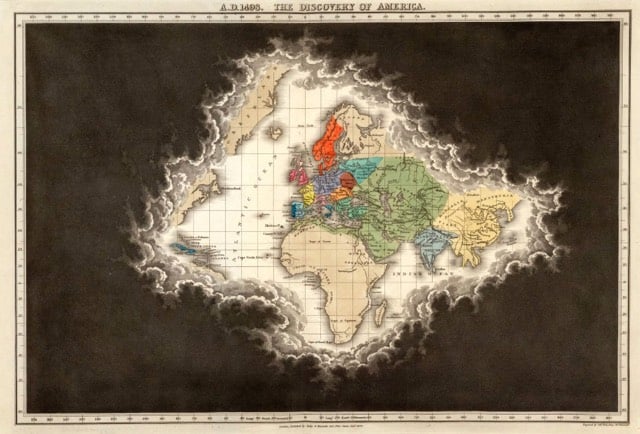
Betsy Mason and Greg Miller are writing a new blog for National Geographic about maps called All Over the Map. Here’s a mission statement.
There is something magical about maps. They transport you to a place you’ve never seen, from the ocean depths to the surface of another planet. Or a world that exists only in the imagination of a novelist.
Maps are time machines, too. They can take you into the past to see the world as people saw it centuries ago. Or they can show you a place you know intimately as it existed before you came along, or as it might look in the future. Always, they reveal something about the mind of the mapmaker. Every map has a story to tell.
You can also follow their progress on Twitter and Instagram. They recently shared this comparative rivers and mountains chart on Instagram; it’s one of my all-time favorite charts.

What Are the Physical Limits of Humanity?
A new video from Kurzgesagt explores the limits of human exploration in the Universe. How far can we venture? Are there limits? Turns out the answer is very much “yes”…with the important caveat “using our current understanding of physics”, which may someday provide a loophole (or wormhole, if you will). Chances are, humans will only be able to explore 0.00000000001% of the observable Universe.
This video is particularly interesting and packed with information, even by Kurzgesagt’s standards. The explanation of the Big Bang, inflation, dark matter, and expansion is concise and informative…the idea that the Universe is slowly erasing its own memory is fascinating.
Wikipedia page of nicknames given to people by George W Bush. How had I forgotten about Turd Blossom?
The tense pre-match atmosphere of an English football rivalry
In Twelfth Man, a short film by Duane Hopkins, you’ll witness the chaotic and occasionally ugly run-up to a football match in one of the most heated rivalries in England, the Tyne-Wear derby pitting Sunderland against Newcastle United. Watching it, I was reminded of the rhetoric and confrontations happening around the US in the presidential primaries. Turns out, equating politics with sports is not far off the mark in this case.
Sunderland and Newcastle are situated 12 miles apart in North East England. After first meeting in 1883, the teams have played a total of 155 matches, with each winning 53 matches (with 49 draws). According to Wikipedia (and ultimately sourced from a pair of texts on the two cities), the rivalry between the two cities dates back to the English Civil War in the 17th century:
The history of the Wear-Tyne derby is a modern-day extension of a rivalry between Sunderland and Newcastle that dates back to the English Civil War when protestations over advantages that merchants in Royalist Newcastle had over their Wearside counterparts led to Sunderland becoming a Parliamentarian stronghold.
Sunderland and Newcastle again found themselves on opposite sides during the Jacobite Rebellions, with Newcastle in support of the Hanoverians with the German King George, and Sunderland siding with the Scottish Stuarts.
If you’re unfamiliar with English football, the entire entry is worth a read, particularly the sections on policing and banning fans during away games and hooliganism. There’s even an entire section on players (and a couple of managers) who have played for both teams, a reminder that although rivalries may stretch back centuries and be rooted in deep political differences, money holds a powerful attraction. (Which brings us right back to the US presidential primaries…)
Update: Matches between the two teams may be hard to come by next year. With a 3-0 win over Everton on May 11, Sunderland secured a place in the Premier League next year and caused Newcastle to be relegated to the Championship, the league below the Premier League. The bitter rivalry rolls on.
Update: See also Viceland’s The Eternal Derby about a football rivalry in Serbia. Here’s the trailer for the episode:
And some footage of a pre-match riot. Intense.
Wow. Hi is closing down but they’re archiving the whole site on a nickel plate that will last 10,000 years.
“How Do You Know When to Cut?”
I think this might be my favorite Every Frame a Painting yet: Taylor Ramos and Tony Zhou explore how a film editor does what she does. Or as Zhou puts it, “how does an editor think and feel?” The point about emotions taking time is especially interesting, as is the accompanying comparison between similar scenes from The Empire Strikes Back and Ant Man.
Emotions take time. When we watch people onscreen, we feel a connection to them. And that’s because we have time to watch their faces before they speak and time to watch them afterwards. Editors have to decide, “how much time do I give this emotion?”
Every Radiohead album and song ranked from best to worst
On the occasion of the release of Radiohead’s latest album, Consequence of Sound has ranked every album and every song by the band. I won’t tell you the exact order, but Kid A, In Rainbows, and OK Computer are their top 3 albums (spot on…Kid A is my #1) and Airbag, The National Anthem,1 Fake Plastic Trees, and Everything In Its Right Place make the top 10 songs (mine is Everything In Its Right Place or maybe the live version of True Love Waits).
My kids and I were listening to Kid A in the car last summer and when The National Anthem came on, Ollie read the display, scratched his head, and said, “this is a really weird version of the national anthem.”↩
A visually rich tribute to the films of Christopher Nolan
Pedro Herrero celebrates The Universe of Christopher Nolan by showcasing the themes, both visual and not, that run through Nolan’s films, like manipulating time and space, the malleability of memory and perception, and fear. (via one perfect shot)
The magical Hyperloop
Yeah, so, this Hyperloop thing is sort of happening. MIT Tech Review: The unbelievable reality of the impossible Hyperloop.
Ultimately, capsules will scream through the center of such a tube at 700 miles per hour on a cushion of air-a way to get from A to B faster and more efficiently than planes or trains. The first public tests of this concept, albeit on an open-air track, will take place in North Las Vegas this week. They’re aiming to hit 400 miles per hour.
And that first public test took place today.
Colorized photos of vintage landmarks being built

Photo retoucher Jordan Lloyd took old photos of famous buildings and monuments being built and colorized them. The Eiffel Tower is the best one, but the others are worth a look as well. I also like these two colorized views of the Golden Gate Bridge construction (not done by Lloyd):
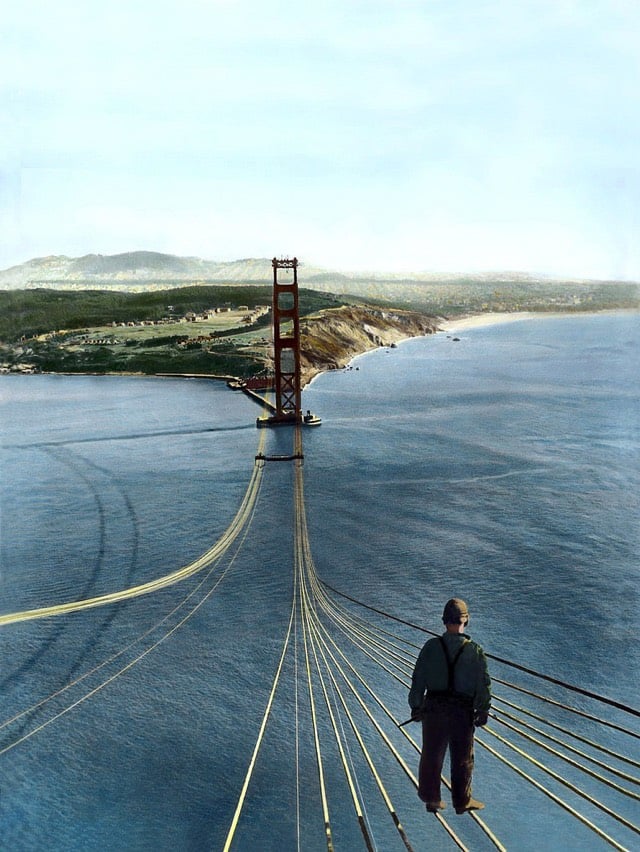
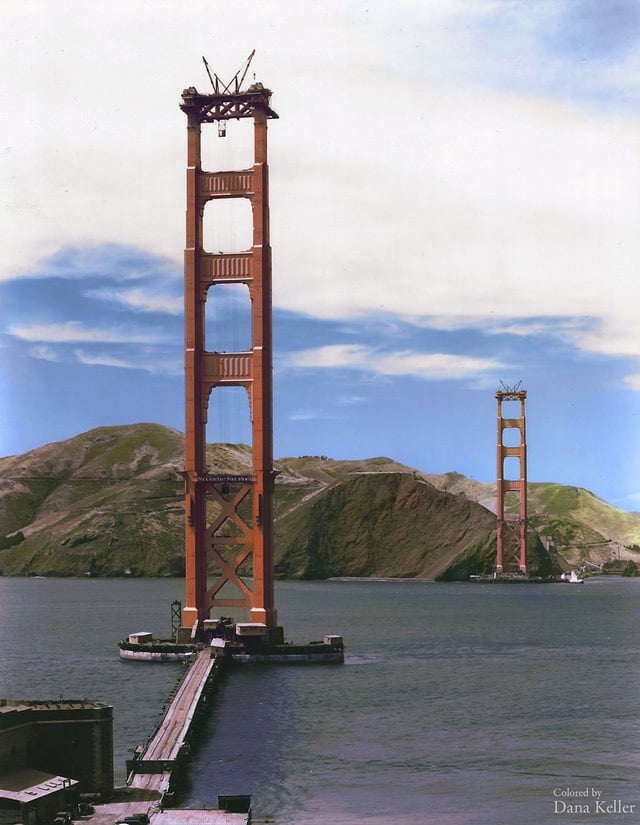
Lloyd and Wolfgang Wild are collaborating on a book of colorized historical photographs called The Paper Time Machine. You can support the project on Unbound.
Immigrants share their biggest surprises about US culture
Serena Solomon grew up in Australia and when she moved to the US, she was shocked at the number of products sold at American grocery stores. Solomon recently asked other immigrants to share their biggest surprises about American culture. From a French welder:
It is so frustrating here. Nothing is easy. Nothing is efficient. To pay rent, you have to use a check? I have never written a check. The last time I got a check was maybe 20 years ago, from my granddad. Getting an apartment takes so long as opposed to other countries I have lived in where it’s just a handshake. That’s it. I went to the post office yesterday, and I was waiting in line for maybe an hour — and there were only five people in front of me. I felt like I went from a Western country to a third-world country. People here with money have access to things. The rest of the people are just trying to survive.
Food is a big difference for some:
Food-wise, I noticed us all getting these round faces from the bad food we ate. We did not realize it, because it was the standard and you think because it’s advertised and readily available it can’t be bad for you. We were so ignorant coming from South Africa, eating home cooked food every night over there. Then, once we got here, we ate those corn dogs almost every day for lunch, little pizzas for snacks, and sugary cereals for breakfast.
Reminds me of Cup of Jo’s excellent series about how parenthood differs around the world.
The 10 hidden edits in Alfred Hitchcock’s Rope
Rope is a 1948 film by Alfred Hitchcock that appears to be shot in realtime using one unbroken take.1 But since film camera magazines at the time could only hold 10 minutes of film, there are actually ten cuts. Five of these cuts were carefully disguised and the other five occurred every 20 minutes or so during reel changes when the movie was shown at theaters (and which don’t appear seamless when you watch the movie all the way through on DVD, etc.). This video shows all ten cuts (spoilers, obviously).
Well, I just now figured out that the title has two meanings: it represents the murder weapon and the unbroken narrative. Clever, Mr. Hitchcock.↩
Dad watches The Goonies with 8-yo son. Son asks, “Where are their parents?” The loss of unsupervised time for kids.
Can you draw a working bicycle from memory?


Velocipedia is a collection of drawings of bicycles paired with realistic renderings of what the real-life bikes would look like. Some of the sketches, drawn from memory, are not that accurate and result in hilariously non-functional bikes.
2 men died during a hard cave dive. Recovery of the bodies was improbable, but 4 men went back for their friends
Pixar’s approach to storytelling
This video is a quick look at how Pixar thinks about its characters and storytelling. It focuses on one item on this loose list of Pixar’s rules for storytelling:
Why must you tell THIS story? What’s the belief burning within you that your story feeds off of? That’s the heart of it.
Hot Wheels presents The Homer
Hot Wheels released a die-cast version of The Homer, the “everyman” car designed by Homer Simpson in season two episode of The Simpsons. Designed for his half-brother’s car company, the car was so bad and expensive that it drove (ha!) the company out of business. And now it can be yours!
Epic Time Lapse Videos of Mercury’s Transit of the Sun
About 13 times per century, the planets align in the heavens and the Earth can watch Mercury crossing the face of the Sun. NASA’s Solar Dynamics Observatory was watching too and captured time lapse videos from several angles using various instruments measuring magnetism, visible light, and UV. The cosmic ballet goes on.
See also more from the SDO: a gorgeous time lapse of the Sun, a three-year video portrait of the Sun, and Thermonuclear Art.
Becoming the national mammal is the bison’s reward for surviving (so far) human-driven extinction. Congrats!?
Darth Vader’s exploded head and BarbieCue


From Austrian street artist Nychos, previews of a Dissection of Darth Vader’s Head piece and a “Barbie meltdown” piece from an upcoming show at Jonathan LeVine Gallery in June. You can see more of his work on his Tumblr and Instagram.
Tom Hanks is back as Robert Langdon in Inferno
Robert Langdon is back. The Da Vinci Code’s Dan Brown wrote a book about a secret riddle related to Dante’s Inferno and Tom Hanks is back to star in the movie version. Oh yes.
Confession: The Da Vinci Code and Angels & Demons are two of my favorite guilty pleasure movies. Further even more embarrassing confession: my pleasure in The Da Vinci Code is not even guilty…I think it’s just a straight-up good action adventure movie. In summary: are you sure you want to trust my movie advice in the future? (via trailer town)
Sign language translation gloves
A pair of undergraduate students, Thomas Pryor and Navid Azodi of the University of Washington, have invented a pair of gloves that translates the sign language movements of the wearer into spoken English in realtime.
Thomas and Navid developed SignAloud, a pair of gloves that recognizes hand gestures that correspond to words and phrases in American Sign Language, using resources at the University of Washington CoMotion MakerSpace, a place that offers communal tools, equipment, and opportunities for students. Each glove contains sensors that record hand position and movement. As users put on the gloves, the device calibrates to account for differences in sensor placement. Data from the sensors is sent from the gloves wirelessly via Bluetooth to a central computer. The computer looks at the data for gestures through various sequential statistical regressions, similar to a neural network. If the data matches a gesture, then the associated word or phrase is spoken through a speaker.
Update: A woman named Katie, who is a linguistics professor and ASL interpreter, wrote a not-so-positive review of the gloves on her blog. Actually, she calls them impractical and “nothing more than a fun party trick”.
ASL uses facial expressions and other “non-manual” markers to show grammar. The difference between a question, a statement and a command is purely on your face. How can the gloves interpret your face?
And she also points out the biggest thing I noticed when I first watched the video:
These guys are not signers. The signs they demoed are (laughably) not even correctly produced. Programming the device with incorrect input will not, as they say in their video, “translate American Sign Language into speech”. Without the collaboration of a deaf person (the targeted audience of these things), how do these guys even know that what they’re doing is right?
Sounds like a well-meaning experiment that may have merit in the future (like the Apple Watch?), but, as Katie says, presently impractical. (via @jonathonbellew)
Update: Alex Lu writes that deaf people don’t need new communications tools.
Deaf people should not have to wear gloves to make their words and presentation palatable to hearing people. You already have all the tools you need to communicate with us, if you would only learn how to use them. It is time that hearing people respect Deaf people for who they are, instead of forcing us to be empty caricatures of hearing standards.
John Oliver on the media’s science coverage
On Last Week Tonight last night, John Oliver took the media’s often shoddy coverage of science to task. Like cherry picking the results of single studies that “prove” that chocolate prevents cancer and that sort of thing.
As a somewhat reluctant member of “the media”, I’ve been guilty of this sort of behavior to varying degrees in the past. In the last few years, I’ve been working to improve on this count — by reading studies, declining to post stuff that doesn’t make the grade, reading what other trusted media sources are saying, using softer language like “could” or “may” instead of “does”, distinguishing between correlation and causation — but I still make mistakes.
At a certain point though, you have to rely on the scientific literacy of your readers. I can’t explain the scientific process to everyone every single time. At some point, I need to assume we’re all taking the results of studies with a similarly sized grain of salt.
In the end, I love science and I want you to love it too. That’s why I often write about it, about the history of how we came to know what we know, about the limits of our knowledge, and, especially, about efforts to push beyond the boundaries of the known. There’s always the temptation to gussy science up, to fit the facts to my world view. But deep down, I know that’s unnecessary — science is awesome all by itself! — and harms the goal of increasing scientific literacy and interest. I’m gonna trying reminding myself of that more in the future.
Should sex work be a crime? Feminists say yes. And no.
Dennis Crowley on how he and some friends started a pro soccer team in NY in less than a year’s time
Alanis updates Ironic with modern situations
On The Late Show with James Corden, Alanis Morrissette sung an updated version of her hit song, Ironic. Here are the lyrics:
An old friend sends you a Facebook request
You only find out they’re racist after you accept
There’s free office cake on the first day of your diet
It’s like they announce a new iPhone the day after you buy it
And isn’t it ironic, don’t you think?It’s like swiping left on your future soulmate
It’s a Snapchat that you wish you had saved
It’s a funny tweet that nobody faves
And who would’ve thought it figures
Get Alanis in the studio (alone), produce it, cut it, release it.
Mayans located their cities according to constellations

15-year-old Canadian William Gadoury has translated his interest in the Mayan civilization into two remarkable discoveries. Gadoury noticed that the locations of the biggest Mayan cities matched the locations of the stars in Mayan constellations. Furthermore, the star charts pointed to the existence of a previously unknown city, the ruins of which have since been uncovered by satellite photography.
“I did not understand why the Maya built their cities away from rivers, on marginal lands and in the mountains,” said Gadoury. “They had to have another reason, and as they worshiped the stars, the idea came to me to verify my hypothesis. I was really surprised and excited when I realized that the most brilliant stars of the constellations matched the largest Maya cities.”
Someone start a Kickstarter campaign so that he can visit those ruins! (via @delfuego)
Update: Due to a mislabeled file on Wikipedia, I used a photo of an Aztec compass instead of a Mayan image. I have replaced with an image of the Mayan zodiac.
Also, per my post about media coverage of science yesterday, I’ll point out quickly that there’s much to be skeptical about re: this story (see this post from a Mesoamerican archaeologist). More likely than not, there’s a Mayan scholar mailing list going bananas right now…I’ll let you know if I hear anything specific.
In the meantime, this story in the Independent contains some satellite photos of the location in question. (via @gunnihinn)
Update: Vice: That 15-Year-Old Kid Probably Didn’t Discover a Hidden Mayan City.
The rectangular feature seen on satellite is likely an old corn field (it’s not the right shape to be a pyramid). There are indeed ancient Maya sites all over the place, and satellite imagery and LiDAR are being used to discover them, but this doesn’t seem to be one of those cases…
On the bright side, the “if it sounds too good to be true, it probably is” study has been successfully replicated again. Science rolls on…
Radiohead, A Moon Shaped Pool

Radiohead’s ninth studio album is out and it’s called A Moon Shaped Pool (with a studio version of True Love Waits!). You can buy it directly from the band or on iTunes. The album is also on Apple Music but doesn’t appear to be on Spotify yet…dunno whether it will show up there later. There’s a special edition that ships in September that will have two extra tracks.
Update: The names of the tracks are in alphabetical order. I’ve just started listening, but they didn’t think track order was important? Lemonade this is not, I guess.
Update: From Buzzfeed’s list of 37 Things You Might Not Know About Radiohead, these two tidbits about A Moon Shaped Pool:
36. At the end of the track “Daydreaming” off the new album, Yorke’s voice is played backwards, singing the lyric “half of my life” over and over. Yorke, 47, was divorced from his wife last year after 23 years of marriage.
37. “True Love Waits” was originally recorded when Thom Yorke was first married. The fact that it has only now turned up as the final track on an album released following the end of his 23-year marriage is, well, devastating. The first word on A Moon Shaped Pool is “Stay” … the last is “Leave.”
An interactive timeline of the top Billboard songs

From Matt Daniels at Polygraph, a moving timeline of the 22,000 songs that hit the top 5 on the Billboard charts from 1958-2016. Whoa, there is a lot of pop music I missed in the late 90s through the late 2000s.
See also The most timeless songs of all time and Interactive timeline: listen to the #1 rap songs from 1989-2015.
Lovely illustrated Wes Anderson postcards



Brooklyn-based illustrator and design Mark Dingo made these postcards based on Wes Anderson’s films, one for each movie. (via @timothy_schuler)
Radiohead and PT Anderson collaborate on Daydreaming
Let’s not bury the lede here…Radiohead’s new album will be out on Sunday, May 8th at 2pm ET. !!!
The video is by Paul Thomas Anderson for Radiohead’s second single, Daydreaming (buy direct, listen at Spotify, etc.) Why PT Anderson? Radiohead’s Jonny Greenwood did the soundtrack for Anderson’s There Will Be Blood.
Update: In my haste to post this earlier, I forgot that Greenwood has done the music for several of Anderson’s projects, including The Master and Inherent Vice. (thx, all)
Can you sleep train your baby at 2 months? (A: Yes. We did it 2X. It is my #1 new parent tip.)
Some prime numbers are illegal in the United States
The possession of certain prime numbers is illegal in the US. For instance, one of these primes can be used to break a DVD’s copyright encryption.
Beautiful handmade wooden skis
Mike Parris worked as a robotics engineer at Carnegie Mellon in the 90s but always harbored a greater interest in skiing. He eventually moved to Jackson Hole, WY to make handmade skis & snowboards full-time. Igneous skis cost $1600 a pair, but they are beautiful and each pair is made especially for how each person skis.


When I saw the skis in the video, I wondered how a wooden ski would hold up to tough skiing, but it turns out that in addition to the hardwood on the top, Igneous skis use graphite bases, composite fiberglass, and Kevlar as part of the construction.
Ye Olde Medieval Tube Map

Londonist created a map of the London Underground with station names contemporary to medieval London.
The medieval period spans something like 1,000 years, covering the centuries from the Roman withdrawal around 400 AD to the rise of the Tudors in the late 15th century. Place names, of course, changed greatly over this time and those on the map were not necessarily all in use at the same time. Where applicable, we’ve favoured spellings used in the Domesday survey of 1086. Elsewhere, we’ve taken the earliest recorded version of a place name.
Rube Goldberg HTML form

Ahhh, this makes me nostalgic for the 90s World Wide Web. Designer Sebastian Serena has built a Rube Goldberg machine out of HTML form elements. Once you start, you’ll watch the whole thing. (via @Colossal)
How to understand a Picasso painting
It’s impossible to tell someone how to interpret paintings by Picasso in only 8 minutes, but Evan Puschak provides a quick and dirty framework for how to begin evaluating the great master’s work by considering your first reaction, the content, form, the historical context, and Picasso’s own personal context.
Early entries from the National Geographic Travel Photographer of the Year Contest. These are fantastic.
Teen born with no fingers is a piano virtuoso
Humans are amazing. Alexey Romanov has no fingers, took up music only two years ago, and can play the piano better than 99.9% of world’s population. (via the guardian)
Jane Jacobs born 100 years ago today

Jane Jacobs, journalist, activist, and author of The Death and Life of Great American Cities (one of my favorite books of all time), was born 100 years ago today. Curbed has a big collection of stories in celebration and Vox also has an appreciation of her career.
When Jane Jacobs published The Death and Life of Great American Cities in 1961, she was a lone voice with no credentials speaking up against the most powerful ideas in urban planning. Fifty-five years later, on Jacobs’ 100th birthday (honored in today’s Google Doodle), urban dwellers are all living in her vision of the great American city.
The Death and Life of Great American Cities was a reaction to urban planning movements that wanted to clear entire city blocks and rebuild them. Jacobs argued this ignored everything that made cities great: the mixture of shops, offices, and housing that brought people together to live their lives. And her vision triumphed.
Fun and sorta weird fact: neither The Death and Life of Great American Cities or Robert Caro’s The Power Broker (about Jacobs’ foe Robert Moses) is available in ebook format.
Update: From an interview with Jacobs included in Jane Jacobs: The Last Interview and Other Conversations:
If I were running a school, I’d have one standing assignment that would begin in the first grade and go on all through school, every week: that each child should bring in something said by an authority — it could be by the teacher, or something they see in print, but something that they don’t agree with — and refute it.
BTW, I started the audiobook version of The Power Broker today and it is already so good. (via brainpickings)
Lessons from a 747 pilot
Mark Vanhoenacker is a pilot for British Airways and also the author of the well-reviewed Skyfaring, a book about the human experience of flight. Vanhoenacker recently shared six things he’s learned from being a pilot for the past 15 years.
I came up with the term “place lag” to refer to the way that airliners can essentially teleport us into a moment in a far-off city; getting us there much faster, perhaps, than our own deep sense of place can travel. I could be in a park in London one afternoon, running, or drinking a coffee and chatting to the dog-walkers. Later I’ll go to an airport, meet my colleagues, walk into a cockpit, and take off for Cape Town. I’ll fly over the Pyrenees and Palma and see the lights of Algiers come on at sunset, then sail over the Sahara and the Sahel. I’ll cross the equator, and dawn will come to me as I parallel the Skeleton Coast of Namibia, and finally I’ll see Table Mountain in the distance as I descend to the Mother City.
Then, less than an hour after the long-stilled wheels of the 747 were spun back to life by the sun-beaten surface of an African runway, I’ll be on a bus heading into Cape Town, sitting in rush hour traffic, on an ordinary morning in which, glancing down through the windshield of a nearby car, I’ll see a hand lift a cup of coffee or reach forward to tune the radio. And I’ll think: All this would still be going on if I hadn’t flown here. And that’s equally true of London, and of all the other cities I passed in the long night, that I saw only the lights of. For everyone, and every place, it’s the present.
43 years in solitary
Albert Woodfox describes what it feels like to be on the outside after spending 43 years in solitary confinement.
You know, human beings are territorial, they feel more comfortable in areas they are secure. In a cell you have a routine, you pretty much know what is going to happen, when it’s going to happen, but in society it’s difficult, it’s looser. So there are moments when, yeah, I wish I was back in the security of a cell.
Scientists: climate change isn’t a prank
Jimmy Kimmel had some scientists on his show recently to tell the American public that anthropogenic climate change is real, that’s it’s not a prank, and that the scientific community is “not fucking with you” about this. Trigger warning: the first minute of this video features Sarah Palin speaking.
55 generations of sake brewing
One of the oldest businesses in the world, Sudo Honke is a sake brewery founded in 1141 and managed by the Sudo family for the past 55 generations.
We’ve been making sake for at least 870 years.
I love the “at least” bit. You can buy some of their sake online. (BTW, feel free to supply your own “Sudo, pour me a sake” joke.)
Falling through water to a new free diving world record
Yesterday, New Zealand’s William Trubridge set a free diving world record in what’s called the free immersion apnea discipline. According to the official results, Trubridge dove, without using fins or weights or tanks, to a depth of 124 meters in Dean’s Blue Hole in the Bahamas. The video above offers a view of most of the dive, which took 4 minutes and 24 seconds for Trubridge to complete. I don’t know a whole lot about the mechanics of free diving, so I was surprised that after a few pulls on the rope to get himself going, it’s a free fall to the bottom. Watching him falling motionless through the water like that was eerie.
Update: Thanks to @chriskaschner for the diving physics lesson:
Below ~25m your lungs compress from pressure and you “fall” underwater, no more floating, only way back is to swim/ pull up
Burn the Witch by Radiohead
Two days ago, Radiohead withdrew its forces from the internet. Today, they dropped a new video on YouTube. The rest of the new album soon? Please?
Update: It’s on Spotify now and available for sale on Radiohead’s site and iTunes. Also, I am liking this song a lot.
An interactive Garden of Earthly Delights

On the 500th anniversary of his death, the Dutch public broadcasting service has created an interactive version of Hieronymus Bosch’s The Garden of Earthly Delights.
Motion capture of kung-fu moves create beautiful digital sculptures
Tobias Gremmler used motion capture to transform kung-fu moves into a variety of digital sculptures. (via colossal)
The cinematic influences of Beyonce’s Lemonade
From Nelson Carvajal, an examination of the visual influences of Beyonce’s Lemonade visual album, from Pipilotti Rist to Terrence Malick to David Lynch.
The biggest influence present in Lemonade, is that of the great Terrence Malick. Imagery from his films To The Wonder and The Tree of Life (in particular a standout sequence involving a bedroom underwater) definitely inspired a lot of the overall tone of introspection and spiritual reflection that Beyoncé is striving for here. One of Lemonade’s directors, Kahlil Joseph, shot B-roll on Malick’s To The Wonder, so the impressionistic style of filmmaking has obviously carried over.
Medieval Fight Club
This is NUTS. The members of the Armored Combat League get dressed up in medieval armor and go at it, hard. Like full on with knives and axes and clubs.
We’ve seen guys’ fingers get cut off, we’ve seen guys’ knees kicked in, we’ve seen guys break both of their arms in the same fight, we’ve seen guys get all their teeth knocked out because the helmet smashes up against their face or something, some guy had to get flown out by helicopter because he has blood in his brain…
Makes movie fighting seem a lot more like dancing, doesn’t it? (thx, byrne)





Stay Connected